Beyond payment tokenization: Why developers are choosing Evervault's encryption-first approach
How Evervault’s dual-custody encryption model eliminates the fundamental limitations of traditional tokenization for PCI compliance


If you only have a few minutes to spare, here’s what you should know about George Stibitz:
During his time at Bell Labs, Stibitz invented Boolean logic digital circuits – or relays for digital computing – in 1937. This was critical in the development of digital and communication technology.
He set the stage for fax machines and modems. His Model I set the stage for the types of data transmissions that later became commonplace with fax machines and modems.
He developed a desk-size electronic digital computer that was a forerunner of present-day minicomputers.
Stibitz had 38 patents in his own name: ranging from computer systems to a stereophonic organ. (And that's not including the patents for his inventions at Bell Labs.)
Stibitz introduced excess-3 code, floating decimal arithmetic, self-checking circuits, jump program instructions, taped programs and 'table-hunting' sub-computers.
A weekend in Autumn 1937 changed everything. All it took was some metal strips from a tin tobacco can, bulbs, batteries, and some borrowed Bell Labs telephone relays.
“I have no head for history. I did not know I was picking up where Charles Babbage in England had to quit over a hundred years before. Nor did it occur to me that my work would turn out to be part of the beginning of what we now know as the computer age.”
George Stibitz was destined for greatness. The son of a theology professor father and maths teacher mother, Stibitz was a blend of both worlds. He was always experimenting, nearly burning down his house by overloading the circuits with an electric motor. Despite the fire risk — or, perhaps, because of it — his parents enrolled him in Moraine Park, an experimental high school focused on science and engineering.
Stibitz then went on to study applied mathematics at Denison University, followed by a master's in Schenectady, upstate New York. Schenectady also happened to be the headquarters of Edison’s General Electric Company. Stibitz got a job as a technician at GE's research labs for a year, before pursuing a PhD in mathematical physics at Cornell in 1930.
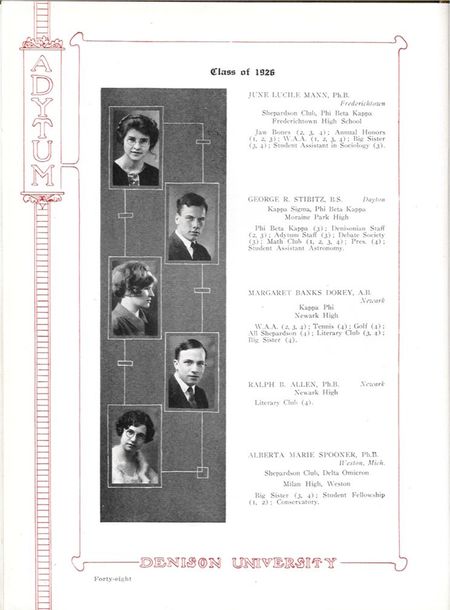
After graduation, Stibitz worked as a research mathematician at the Bell Telephone Laboratories in New York City. His Sisyphean task was to work on an endless number of calculations required to design and operate an increasingly complex system of telephones. The only tool available was a simple desktop mechanical calculator — a blunt instrument for the growing demands of the expanding telephone networks.
At Bell, there was a group of mathematicians who designed relay-switching equipment – the same kind of on-off electromechanical switches used in calculators. Bell scientists were aware of the similarity between these calculators and the zeros and ones of binary mathematics, but they hadn’t made the connection that relays could also be used to perform symbolic logic. That would require one man, and his pipe.
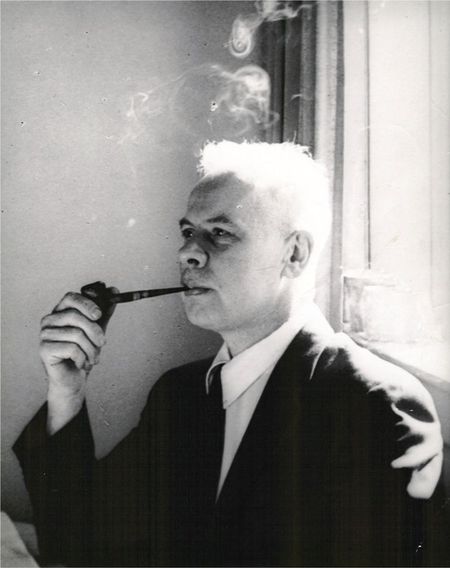
Stibitz came home one weekend in autumn 1937, armed with just an idea and some borrowed Bell Labs telephone relays “to start what I thought of as a play project”. This “play project” was a combination of his calculator frustrations and his work on relays.
“I had observed the similarity between the circuit paths through relays and the binary notation for numbers and had an idea I wanted to work out.”
Reliving the sense of play and experimentation from his youth, Stibitz got to work.
“That weekend I fastened two of the relays to a board, cut strips from a tobacco can and nailed them to the board for input; bought a dry cell and a few flashlight bulbs for output, and wired up a binary adder. I wired the relays to give the binary digits of the sum of two one-digit binary numbers, which were entered into the arithmetic unit by pressing switches made of the metal strips. The two-flashlight-bulb output lighted up to indicate a binary 1 and remained dark for binary 0.”
This was the “Model K”: a binary adder built out of a few light bulbs, batteries, relays and metal strips cut from tin cans on his kitchen table. This device was similar to a theoretical design described a few months earlier by Claude Shannon in his master's thesis. This Model K, so-called because it was built on his kitchen table, was the first electromechanical computer built in America.

“I have no head for history. I did not know I was picking up where Charles Babbage in England had to quit over a hundred years before. Nor did it occur to me that my work would turn out to be part of the beginning of what we now know as the computer age.”
It marked the invention of Boolean logic digital circuits – or relays for automated computing. These circuits could be placed in an open or closed position. Electricity would then flow through the device, depending on the position. This circuit could be used to manage and operate many types of circuits, including telephone circuits.
Although a more successful home project than his boyhood electrical motor mishap, and nothing caught on fire this time round — it didn’t exactly catch fire with the team at Bell Labs either.
“I took my model into the labs to show to some of the boys, and we were all more amused than impressed with some visions of a binary computer industry.”
While the Model K didn’t make much of a mark on Bell’s executives initially, they changed their minds a few months later. There was rising pressure on Bell to find a way of solving its increasingly complex mathematical problems, namely the design of noise filters and amplifying circuits for long-distance telephone lines.
Stibitz, alongside a switching engineer named Samuel B. Williams, created a “complex number calculator.” The Model I, as the machine came to be called, was constructed between April and October 1939 at a cost of about $20,000.
It consisted of two units: 1) a panel, containing about 400 relays, which performed the computations; and 2) a teletype, outfitted with a special keyboard, which was used to enter mathematical problems and to record the answers. It could add two eight-digit decimal numbers in a tenth of a second and multiply two equally large numbers in about a minute.
While the Model I was fast – capable of solving problems up to 100 times the speed of a human – its main features were its reliability and ease of use. You also didn’t have to be in the same room to operate it. Since the teletype was connected to the panel by cable, you could use the Model I from any point in the phone system.
This was demonstrated nine months later, when Bell Labs installed a few teletypes at Dartmouth College for the annual meeting of the American Mathematical Society. Stiglitz sent problems from Dartmouth to the Model I in Manhattan, which solved the problems and sent the answers back to Dartmouth by means of the telegraph. It did all this in seconds. Pretty impressive stuff, particularly for the time.
Although the Model I was an impressive achievement, it wasn’t a very sophisticated machine. The Model I wasn’t programmable. It couldn’t execute conditional jumps; you typed in an equation, and the machine printed out an answer. Secondly, it wasn’t a general-purpose calculator. It was hardwired to perform a given set of operations, and limited to that set. Third, it did not have a memory, or a CPU, or a clearly defined control unit. Finally, despite its capacity for remote computing, it could be used by only one person at a time.
Since Bell Labs wasn’t in the calculator business, its interest in the Model I faded away. However, with the advent of World War II, Bell Labs devoted its considerable resources to the war effort, and Stibitz and Williams designed a number of iterations of the Model for the military. Three of these machines were devoted to special purposes (the Model II helped test the accuracy of a gun director), but the Model V, completed in 1946, was a general-purpose calculator.
It was, conceptually and structurally, a fairly advanced machine. Programmed by an input of paper tape, it contained a small memory, a central processor, and a control unit. The Model V, which cost $500,000 – twenty-five times the price of the Model I – provided mathematical service for more than a decade.
Although Stibitz’s inventions were eventually outmoded by the electronic digital computer, his contributions to the world of computing were ahead of his time. His invention of Boolean logic digital circuits — relays — was critical in the development of digital and communication technology during the 20th century. His Model I set the stage for the types of data transmissions that later became commonplace with fax machines and modems. He developed a desk-size electronic digital computer in 1954 that was a forerunner of present-day minicomputers.
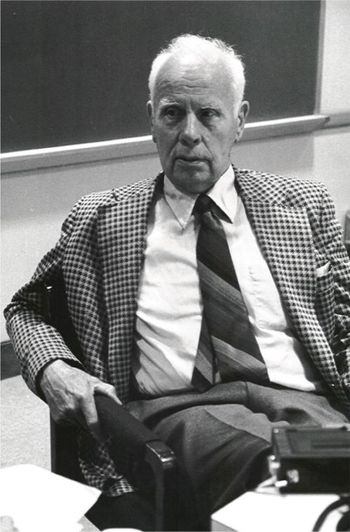
Across these computing developments, Stibitz introduced the excess-3 code, floating decimal arithmetic, self-checking circuits, jump program instructions, taped programs and 'table-hunting' subcomputers. He is also responsible for the error-detector which, according to his daughter, he used to triumphantly stick toothpicks into a random relay and have the machine locate the problem.
He also applied his learnings to domains outside computing. He joined the faculty of Dartmouth Medical School, focused on biomedicine: applying computer science to subjects like the movement of oxygen in the lungs, renal exchange, brain cell anatomy, the diffusion of nutrients and drugs in the body, and a mathematical model of capillary transport. Besides the patents for his inventions assigned to Bell Labs, he held 38 in his own name, ranging from computer systems to a stereophonic organ.
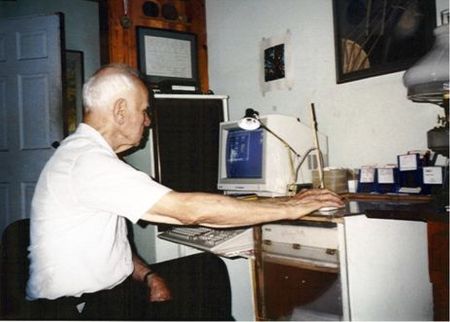
Stibitz remained a lifelong computer pioneer. In his later years, Stibitz "turned to non-verbal uses of the computer". Specifically, he used his Commodore Amiga to create computer art.
"I have made a display of computer "art". The quotes are obligatory, for the result of my efforts is not to create important art but to show that this activity is fun, much as the creation of computers was fifty years ago."
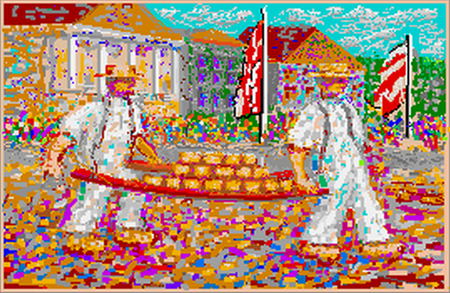
George Stibitz passed away on January 31st, 1995.
George Stibitz is the first in our series of Pioneers. In this series, we’ll chronicle some key figures in the development of encryption, computing, and cybersecurity. We’re portraying these pioneers because we believe that lessons from history can inform our future. While our goal is to abstract away complexity in our products, we think that it is worthwhile to examine that complexity, and to learn from it.